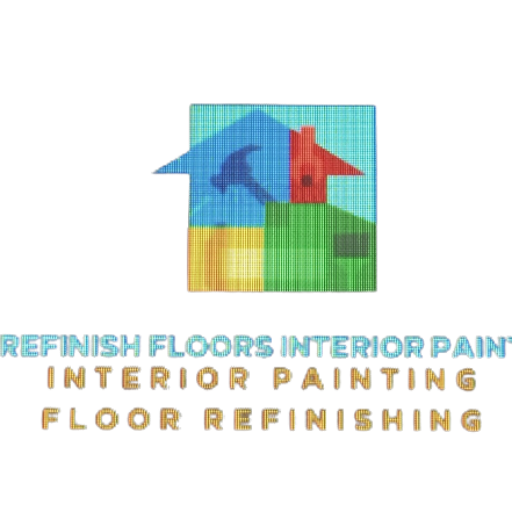Embarking on an interior painting or floor refinishing project can be an exciting endeavor, but it’s crucial to start on the right foot. Scheduling an estimate is the first step in this process, and it sets the tone for a smooth and successful project. In this comprehensive guide, we’ll walk you through the entire process of scheduling an estimate for interior painting or floor refinishing, covering everything from preparation to what to expect during the estimate.
Section 1: Understanding the Importance of an Estimate
Before diving into the nitty-gritty of scheduling an estimate, it’s essential to understand why this step is so crucial. An estimate serves multiple purposes:
- Cost Assessment: An estimate provides you with an approximate cost for the project, allowing you to budget accordingly and avoid unpleasant surprises.
- Scope of Work: A detailed estimate outlines the scope of work, ensuring that both you and the contractor are on the same page regarding the project’s extent.
- Timeline: A reputable contractor should provide you with a tentative timeline for the project, helping you plan accordingly.
- Material Requirements: The estimate should include a breakdown of the materials required, such as paint types, finishes, and any necessary equipment.
Section 2: Preparing for the Estimate
To ensure a smooth and accurate estimate process, it’s essential to prepare properly. Here are some steps to take:
- Define Your Project: Clearly outline the areas that need painting or floor refinishing, including specific rooms, hallways, or common areas.
- Note Any Special Requirements: Make a list of any special requirements or considerations, such as lead paint removal, specific color preferences, or unique finishes.
- Measure the Areas: Take accurate measurements of the areas to be painted or refinished, including ceiling heights, wall lengths, and floor space.
- Document Existing Conditions: Note any existing conditions that may impact the project, such as water damage, cracks, or uneven surfaces.
- Gather Inspiration: If you have specific design ideas or inspiration, gather references (e.g., photos, paint samples) to share with the contractor.
Section 3: Scheduling the Estimate
With your preparation complete, it’s time to schedule the estimate. Here are the steps to follow:
- Research Reputable Contractors: Start by researching reputable painting and floor refinishing contractors in your area. Look for companies with positive reviews, relevant experience, and proper licensing and insurance.
- Contact Multiple Contractors: Reach out to at least three contractors to request estimates. This will give you a range of quotes and allow you to compare services and pricing.
- Provide Project Details: When scheduling the estimate, provide the contractor with detailed information about your project, including the scope of work, any special requirements, and the measurements you’ve taken.
- Schedule a Convenient Time: Work with the contractor to schedule a time for the estimate that is convenient for you and allows them to thoroughly assess the project site.
- Prepare for the Contractor’s Visit: Before the contractor’s arrival, ensure that the areas to be painted or refinished are accessible and free of clutter.
Section 4: During the Estimate
When the contractor arrives for the estimate, be prepared to answer questions and provide any additional information they may need. Here’s what to expect:
- Site Assessment: The contractor will thoroughly assess the areas to be painted or refinished, taking measurements, evaluating existing conditions, and noting any potential challenges.
- Scope of Work Discussion: The contractor will discuss the scope of work with you, ensuring that they understand your expectations and any special requirements.
- Material Selection: If you haven’t already chosen specific materials (e.g., paint types, finishes), the contractor may provide samples and recommendations based on your preferences and the project’s requirements.
- Timeline Discussion: The contractor should provide you with a tentative timeline for the project, including start and completion dates, as well as any necessary preparation or cleanup time.
- Cost Estimate: After assessing the project, the contractor will provide you with a detailed cost estimate, including labor, materials, and any additional fees or expenses.
Section 5: Evaluating the Estimate
Once you’ve received the estimate, it’s essential to evaluate it carefully. Here are some factors to consider:
- Cost Comparison: Compare the estimates you’ve received from different contractors to ensure you’re getting a fair and competitive price.
- Scope of Work Review: Thoroughly review the scope of work outlined in the estimate to ensure that it aligns with your expectations and requirements.
- Timeline Evaluation: Assess the proposed timeline to determine if it fits your schedule and needs.
- Material Quality: If materials are included in the estimate, research their quality and ensure they meet your standards.
- Contractor Reputation and Experience: Consider the contractor’s reputation, experience, and any relevant certifications or accreditations.
Section 6: Choosing the Right Contractor
After evaluating the estimates, it’s time to choose the contractor you feel most comfortable working with. Here are some factors to consider:
- Cost: While cost shouldn’t be the sole deciding factor, it’s important to ensure that the contractor’s pricing is fair and within your budget.
- Communication and Professionalism: Evaluate the contractor’s communication style and professionalism throughout the estimate process.
- References and Reviews: Request references from previous clients and read online reviews to gauge the contractor’s level of service and customer satisfaction.
- Licensing and Insurance: Ensure that the contractor is properly licensed and insured to protect you and your property during the project.
- Gut Feeling: Trust your instincts. If a contractor doesn’t feel like the right fit, it’s okay to continue your search.
Conclusion:
Scheduling an estimate for interior painting or floor refinishing is a crucial first step in ensuring a successful project. By following the steps outlined in this guide, you’ll be prepared to gather accurate estimates, evaluate contractors, and ultimately choose the right professional for your needs. Remember, a well-executed estimate process sets the stage for a smooth and stress-free interior painting or floor refinishing project.
www.a1refinishfloorspaintings.com
A-1 Refinish Floors & Interior Painting
(551) 866-7503

